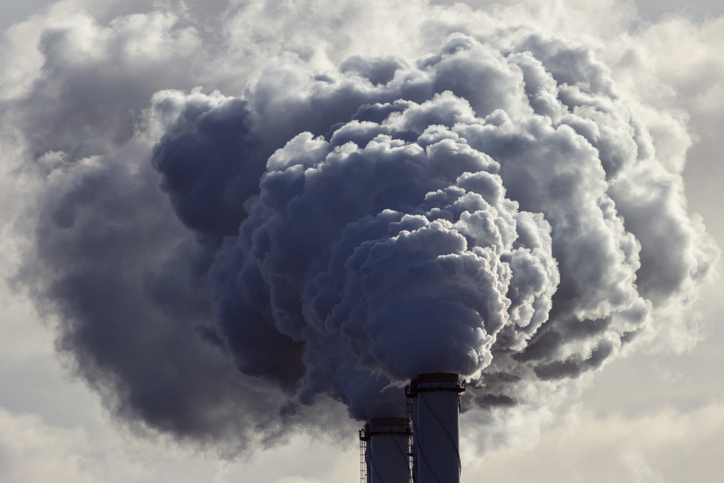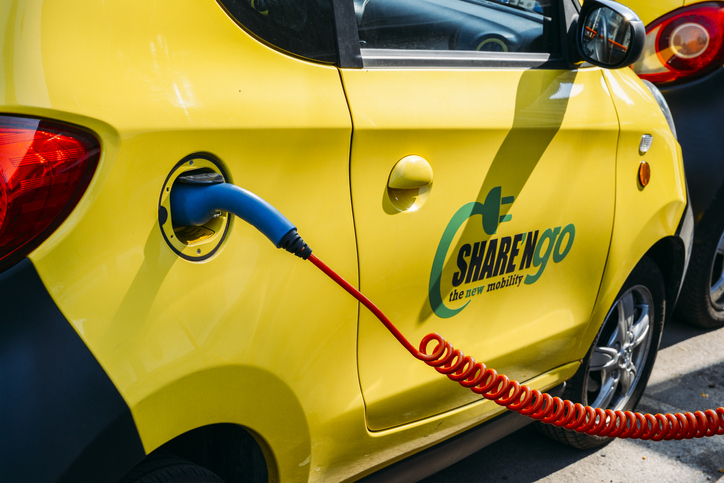
The price of solar power keeps going down. Increasingly, it looks like a great solution to the problem of greenhouse gas emissions and climate change.
And thanks to lithium ion battery technology from Tesla, it's even possible to generate electricity from solar power after midnight. Lithium ion battery technology has dramatically increased the potential for solar power.
But there now may be an even better solution: concentrated solar power (CSP) with molten salt storage. While not likely, this may even begin to keep Elon Musk awake at night.
So just what is CSP with molten salt storage? The idea is to generate a great deal of heat via a solar farm. However, instead of converting the solar radiation into electricity, the solar heat is stored in a molten salt solution. At the appropriate time, the molten salt is converted into electricity. This is possible through the use of a concentrated solar plant. What's that?
In a typical solar farm, arrays of photovoltaic cells capture sunlight and transform the light into electricity. In a CSP plant, a large array of mirrors track the Sun, then reflect sunlight directly onto a tower. The concentrated sunlight heats molten salt in a giant insulated tank to 1050 degrees Fahrenheit (566 degrees Celsius). In one of the plants in Nevada where this technology is in use, the tank can hold up to 3.6 million gallons. To put that in perspective, that's the equivalent of about 6 Olympic sized swimming pools, each 50 meters length (164 feet).
The heat in the tank can be stored very efficiently. In fact, it's reported that there is only 1 degree Fahrenheit loss/day, about 98% thermal efficiency. At such a high temperature, the molten salt flows like water. When it's time to generate electricity, the molten salt then can be converted to electricity. Thus, the power of the Sun generates the heat that is then converted into electricity at night. It can also be converted to provide power during the day when there is peak demand for electricity. To give you an idea of how such a system works, click here.
The Crescent Dunes plant utilizes what is called a "power tower". The National Renewable Energy Laboratory estimates that a power tower will be able to produce electricity at 5.4 cents/KWH, and a parabolic trough, an alternative design, will be able to produce at 6.2 cents/KWH by 2020. These are clearly highly competitive rates.
Several such plants have been constructed in Nevada, California, Spain and the United Arab Emirates. The Crescent Dunes Solar Energy Facility, located in Nevada between Reno and Las Vegas, is rated at 110 Megawatts. It can generate power for 10 hours without recharging, producing 1,100 megawatt hours of power. That's 10 times what batteries can produce at this time. And that's what might keep Elon Musk awake at night.
The technology for concentrated solar power has been around since the 1980's. The first plant was built in the 1990's. Construction on Crescent Dunes in Nevada began in 2011 and was completed in 2015. "All in" cost of the plant is about 1 billion dollars, so it certainly isn't inexpensive. However, for example, the cost to construct a new nuclear unit is estimated to be $ 9 billion. The plant will generate more power, but the capital cost/MW of capacity won't be much different.
Of course, the solar plant will be far safer. Accidentally spill some of the molten salt in this system and the cleanup will be minimal. Do the same at a nuclear facility and it will be a scene reminiscent of Chernobyl or Three Mile Island.
Interestingly, the technology was first developed using funding from the U.S. Department of Energy. It represents an excellent example of how government can play such a critical role. The best role, however, is to fund basic research.
SolarReserve, the company that built Crescent Dunes, wants to build ten more comparable plants in the Nevada desert. These plants will have a combined capacity of 2,000 MW and generate 7 million Mwh/year.
Sounds like a very promising technology, especially given the low costs to produce electricity, not to mention the highly favorable environmental impact. Coal plants can't possibly compete at these prices. So what could limit the acceptance of such plants?
Four key factors tend to work against some of these types of plants: 1) capital cost; 2) aesthetics; 3) land use; and 4) high tension power lines. Capital cost is clearly high, but that's offset by low operating costs. Aesthetics clearly work in favor of these types of plants.
Land use probably also works in favor of these types of plants. Consider just the deployment of such plants on Federal lands, certainly a hot button topic. In 2010 the Bureau of Land Management (BLM), the Federal agency that controls a large part of the US West, approved nine large solar projects. The "footprint" of these nine solar plants was about 40,000 acres. That represents a square of 8 miles on each side (i.e., about 64 square miles). By contrast, during the same year, the BLM issued 1,308 oil and gas leases that had a cumulative footprint of 3.2 million acres – 80 times as large a footprint! In other words, the "footprint" of solar on Federal lands is far, far less than that of oil and gas. That will likely be the case for CSP plants put on private land.
High tension lines are another byproduct of such solar projects. No one considers them particularly attractive - except maybe power engineers and utility executives – but one finds them all over the country. Such high tension lines are needed for all types of power plants.
Thus, the key issue with such plants is their high capital cost of construction. But as noted above, that's offset by low operating costs. The question becomes, will capital markets provide companies with the funds to construct such plants? My expectation is that they will. As with other technologies, the cost of construction will likely decrease as more plants are built and the construction "knowledge base" increases.
As such, there are really now two different technologies that can solve the problem of solar power at night – Tesla's battery solution and the CSP with molten salt solution. Doubtless, other technologies will also emerge. These two solutions make solar power truly viable on a national scale because they both solve the problem of accessing solar power at midnight.
Is molten salt a competitive technology to lithium ion batteries? Will it keep really keep Elon Musk awake at night? Most likely it won't. That's because it's really a complementary technology to battery storage. It's probably the better choice when it comes to large scale energy storage. Lithium ion technology, on the other hand, is probably a much better "smaller scale" technology. After all, is anyone realistically going to have a molten salt storage facility in the garage at home? No, but they're very likely to have a lithium ion battery system.
Just one more nail in the coal power coffin … and maybe even other fossil fuel power sources.
And just that much more evidence that the solution to greenhouse gas emissions is on its way, brought to you not be Big Government and international treaties such as the Paris Climate Accord, but good old fashioned technological innovation.









